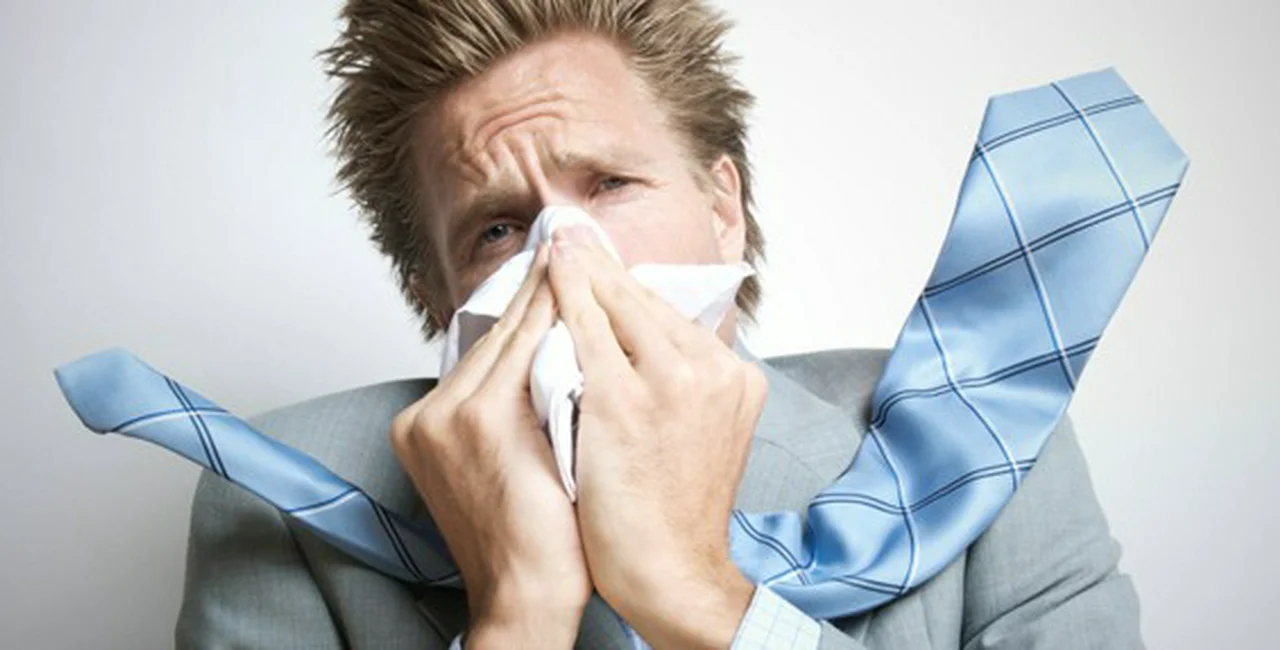If you’re anything like me, by now you’ve already been struck down at least once by either a cold or the flu. And before long one of these acute respiratory ailments is likely to strike again. So what can you do to treat yourself if you’ve caught a bug? Or how can you protect yourself from one in the first place?
Which Bug?
Before we begin, just a reminder that a cold and the flu are different. A cold is usually milder, starting with a sore throat and progressing to a runny nose and cough.
The flu has these symptoms, but can also include muscular aches and a fever, which is thought to begin at 37.7ºC (approx. 99.9ºF). Above 38.9ºC (approx. 102.2 ºF) a fever is considered serious. If using Celsius is a problem for you, you can buy electronic thermometers which give readings in both Celsius and Fahrenheit.
Another difference is duration. A cold can last up to seven days, or a week with a doctor’s certificate, as the saying here goes. The flu can persist much longer.
‘Tis the Season to Be Sniffly
The main season for colds and flu is from January to March. According to the latest data from the National Institute of Public Health, there are 1055 reported cases of acute respiratory infection (ARI) for every 100,000 inhabitants. This is about 1% of the population.
Looking at the long-term graph, these numbers tend to spike around the beginning of the year, reaching 2000 out of 100,000. Does this mean we should expect the same for this year? A representative from the Ministry of Health said it is impossible in advance to set the numbers.
Yet, forewarned is forearmed and prevention is the best medicine, so there are a few things you can do.
Clean Hands and Vitamins: Prevention
The viruses which cause the common cold enter the mucus membrane through the nose, mouth or eyes. No, I’m not suggesting we all wear face masks; according to this piece in the New York Times it’s not that effective against catching a cold, anyway. However, washing your hands regularly during the cold and flu season could stop you getting ill and prevent or at least slow the virus’ spread.
If washing your hands after touching bank notes, door knobs, hand rails and any other regularly handled object seems a little like OCD, there are other ways to reduce infection.
The most important is to stay fit by getting adequate rest and exercise as well as eating enough fresh fruit and vegetables. Vitamin C has some role in the immune system – though experts are not entirely sure what. One thing is for certain, taking vitamin C before you get sick is more effective than taking it after.
To be on the safe side you may opt for a flu shot.
Getting to the Point: The Flu Shot
Because the flu virus changes with each season, you need to get vaccinated against each year’s new strains. Each shot contains a vaccine from the following broad influenza groups: type A H1N1, type A H3N2, and type B.
Nine vaccines (in Czech at the bottom of the link) are registered for use in the Czech Republic. It is best to discuss with your doctor what the differences are and which one is most suitable for you.
The doctor will then give you a prescription for the vaccine. You take this prescription to your pharmacist, who will give you the vaccine to take back to your doctor, who will then administer the shot.
One dosage of the vaccine costs about 200 CZK. People who are over 65, have a chronic illness, or are in hospital, a nursing home, or some other treatment center can claim the vaccine on health insurance, providing they are eligible for public health insurance in the first place.
Whether or not it’s worth getting vaccinated against the flu is a matter of debate and individual choice. The World Health Organization (WHO) recommends a flu shot for “nursing-home residents, elderly individuals, people with chronic medical conditions, pregnant women, health care workers, those with essential functions in society, as well as children from ages six months to two years.”
The WHO also claims that vaccination reduces infection among the young up to 70% to 90%. Among the elderly, vaccination reduces severity in 60% of cases and prevents fatalities in 90%.
Pills, Herbs and Onions: the treatment
Remember, the flu shot is no protection against the common cold, so despite all the precautions, you could still end up sick.
Pharmacies have plenty of types of medicines to fight the symptoms of both diseases. Their effectiveness will depend very much on the individual. What you can be sure of: these medicines are not covered by health insurance; they are available from the counter marked “volný prodej” and you don’t have to pay the regulation fee when purchasing them.
Czech pharmacies also sell a range of herbal teas with such names as “Chřipka a nachlazení” (flu and cold). These are also available from the “volný prodej” counter or from health stores.
Other popular remedies here include black tea with honey or hot water with what else but a shot of slivovice. One folk remedy calls for an onion to be boiled with sugar in water. You then take three teaspoons of this mixture per day to treat a sore throat. Another popular herbal remedy is to drink tea made from fresh ginger. A few places around town sell this. Look for “čerstvý zázvorový čaj”. Or simply buy ginger from the supermarket.
You shouldn’t take antibiotics to treat either a cold or the flu. Antibiotics do nothing for viral infections, though they might be used to treat secondary bacterial infections.
Swine Flu in the Czech Republic
In recent years, the swine flu, which is also referred to here as the “Mexican flu” (mexická chřipka) has gained a lot of media attention for its potential to threaten lives. Compared to other countries, the Czech Republic was not as severely affected. Up to March 2010, there were 102 deaths. This year, according to this report from the European Center for Disease Prevention and Control (ECDCP), there are, as of January 13, 2012, no reported cases of swine flu in the Czech Republic. This situation can change, so it’s worth going to the ECDCP website for regular updates. Their information is in English.
In comparison, the seasonal flu claims from 200 to 1500 lives here annually. Again, most of those are the elderly or people with chronic illnesses.
Symptoms of swine flu are similar to the seasonal flu, though diarrhea and vomiting are also reported along with the traditional symptoms.
Useful Phrases
Most doctors and pharmacists speak English. In case you encounter one who doesn’t, here are a few sentences that might help:
For symptoms:
I have a runny nose. Mám rýmu / Teče mi z nosu.
I have a fever / temperature. Mám horečku / teplotu.
I have a cough. Mám kašel
I have a sore throat. Bolí mě v krku.
My muscles ache / are sore. Bolí mě svaly.
So how do you deal with the sniffly season? Any tips or remedies for other sufferers?
Related articles












 Reading time: 6 minutes
Reading time: 6 minutes 


























